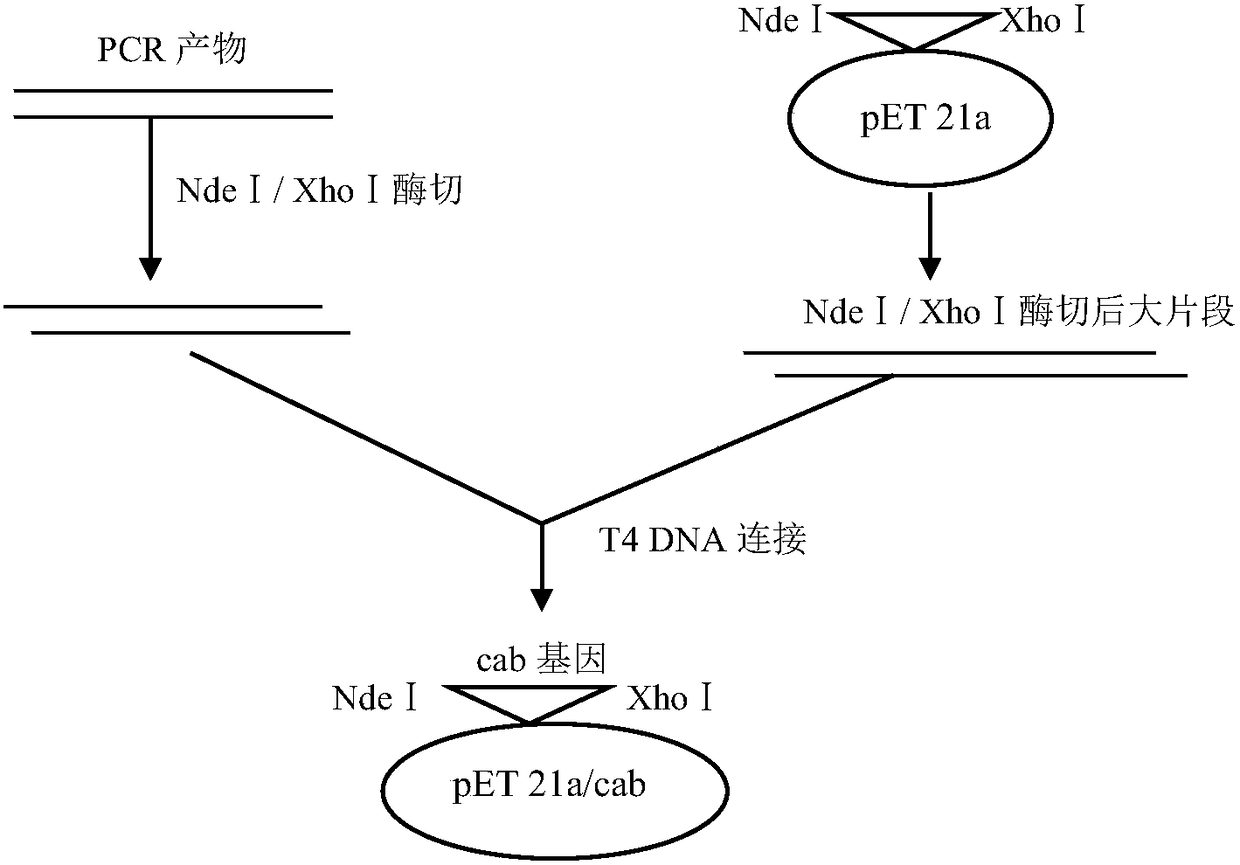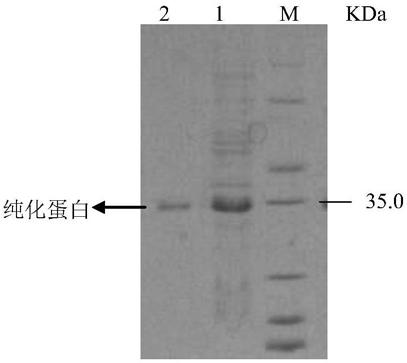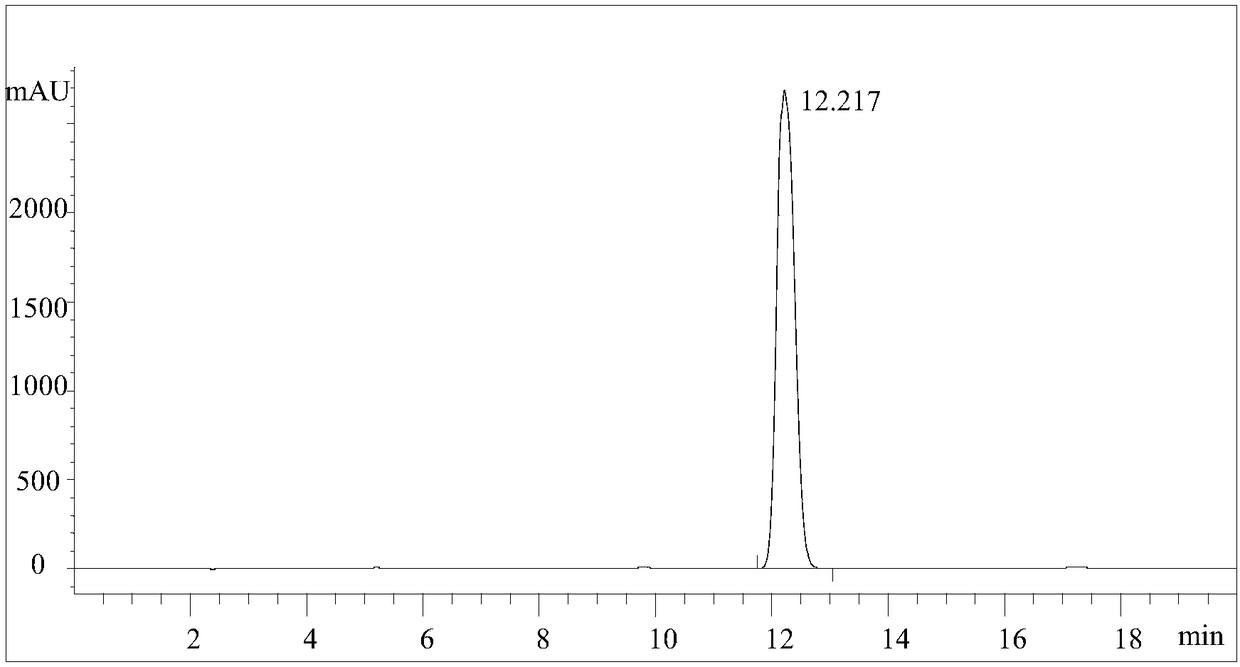Novel 17 beta-hydroxyl steroid dehydrogenase, gene and application thereof
A technology of hydroxysteroid and dehydrogenase, which is applied in application, genetic engineering, plant genetic improvement, etc., can solve the problem of less in-depth research, and achieve the effect of less consumption, less by-products, and environmental friendliness
- Summary
- Abstract
- Description
- Claims
- Application Information
AI Technical Summary
Problems solved by technology
Method used
Image
Examples
Embodiment 1
[0020] Embodiment 1: Cloning of 17β-hydroxysteroid dehydrogenase (17β-HSDcab) gene and construction of genetically engineered bacteria
[0021] 1.1 PCR amplification of 17β-hydroxysteroid dehydrogenase gene
[0022] With Candida albicans as the limited strain, the hypothetical 17β-hydroxysteroid dehydrogenase gene sequence was searched in the NCBI database with 17β-hydroxysteroid dehydrogenase as the search term, and the following two primers were designed according to the sequence:
[0023] Forward primer: 5′-GGAATTC CATATG TCAGAACGTCAAAAAGGTTA-3′ (Nde Ⅰ restriction site is underlined)
[0024] Reverse primer: 5′-CCG CTCGAG CTAATTAACTTTCTCTTTCAGATAC-3′ (Xho Ⅰ restriction site is underlined)
[0025] Using the genomic DNA of Candida albicans 7103 as a template, the target gene fragment was amplified.
[0026] The PCR conditions were: pre-denaturation at 94°C for 2 min; denaturation at 94°C for 15 s, annealing at 50°C for 30 s, extension at 68°C for 1 min, and 30 cycles; f...
Embodiment 2
[0039] Example 2: Induced expression and purification of 17β-hydroxysteroid dehydrogenase (17β-HSDcab)
[0040] Prepare 50 mL of seed liquid, and the medium is LB liquid medium (peptone 10g / L, yeast powder 5g / L, NaCl 10g / L), pick a single colony of genetically engineered bacteria with an inoculation loop and insert it into the medium, 37°C, 200rpm Incubate overnight. The overnight cultured seed solution was transferred to the fermentation medium (LB medium) at an inoculum size of 1%, and cultivated to A at 37°C and 200rpm 600 0.6-1.0, add 0.25mM IPTG, and place at 37°C, 200rpm to induce for 10-12h. 4°C, centrifuged at 6000rpm to collect the bacteria, washed twice with sodium phosphate buffer (50mM, pH 7.5), crushed with a high-pressure homogenizer, centrifuged at 13000rpm to get the supernatant, and then used metal affinity chromatography (Ni The target protein was purified and recovered by column) method, and the target protein was dialyzed to remove imidazole to obtain 17...
Embodiment 3
[0041] Example 3: Substrate spectrum of 17β-hydroxysteroid dehydrogenase (17β-HSDcab)
[0042] Enzyme activity assay system: total reaction volume 0.2mL, pH 7.0-7.5, sodium phosphate buffer solution with a concentration of 100mM, 0.5mM NADPH and 0.8mM different substrates, add an appropriate amount of pure enzyme solution and start detection at 30°C, measure 340nm changes in absorbance.
[0043] The results are shown in Table 1. 17β-hydroxysteroid dehydrogenase (17β-HSDcab) is active on a series of 17-carbonyl steroid compounds, among which the substrate androst-4-ene-3,17-di Ketones and androst-4,9(11)-diene-3,17-dione had the highest activity.
[0044] Table 1 The substrate spectrum of 17β-hydroxysteroid dehydrogenase (17β-HSDcab)
[0045]
[0046]
[0047] Notes: ① The activity of the enzyme on androst-4-ene-3,17-dione was set as 100% (4.4U / mg). ②Enzyme activity definition: the amount of enzyme required to catalyze the oxidation of 1 μmol NADPH per minute is 1 enzy...
PUM
 Login to View More
Login to View More Abstract
Description
Claims
Application Information
 Login to View More
Login to View More - R&D
- Intellectual Property
- Life Sciences
- Materials
- Tech Scout
- Unparalleled Data Quality
- Higher Quality Content
- 60% Fewer Hallucinations
Browse by: Latest US Patents, China's latest patents, Technical Efficacy Thesaurus, Application Domain, Technology Topic, Popular Technical Reports.
© 2025 PatSnap. All rights reserved.Legal|Privacy policy|Modern Slavery Act Transparency Statement|Sitemap|About US| Contact US: help@patsnap.com



